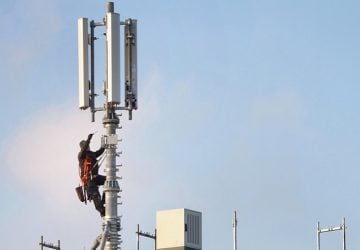- Published on
Unlocking the Truth: Assessing the Hidden Health Hazards of 5G Towers
Unlocking the Truth: Assessing the Hidden Health Hazards of 5G Towers
The roll-out of 5G networks represents a significant advancement in communication systems, enhancing the speed and capacity of wireless services. However, there are rising concerns about the possible adverse health effects due to radiofrequency radiation from the infrastructure associated with these networks, driving many to seek clarity on the issue. This piece aims to clarify the health implications of 5G infrastructure while offering a balanced view amidst confusion fueled by misinformation.

Differentiating Radiation Types: Understanding the Difference Key to the conversation about 5G is the understanding that its infrastructure emits non-ionizing radiation, a type with insufficient energy to remove electrons from atoms, or ionize them. Despite being non-ionizing, the high frequencies and broader bandwidth required to transmit large volumes of data have led to debates on whether there may be unknown biological impacts. In contrast, ionizing radiation, a known carcinogenic agent capable of damaging DNA, is not emitted by 5G technology. Measuring Radiation Impact with the SAR Metric The Specific Absorption Rate (SAR) measures how much radiofrequency energy the human body absorbs from technology, like 5G networks. Regulatory organizations have set thresholds for what they consider safe, but as technology develops, these standards are subject to continuous review to confirm they remain adequate in protecting the public. Assessing Research for Reliable Information The quality and source of research into the health impacts of 5G radiation are crucial. Data should come from esteemed health agencies and scientific publications and undergo peer review to ensure impartiality and scientific rigor. Such stringent criteria ensure that information circulated is both precise and trustworthy. Addressing Reported Symptoms Symptoms reported by some individuals living near 5G installations, such as headaches, fatigue, and cognitive issues, necessitate professional health consultations. While understanding the origin of these symptoms is important, it is also vital to acknowledge the complexity of factors that could contribute to such conditions, maintaining an objective perspective on their causes. Keeping Informed with Health Authority Guidance As new research surfaces, guidelines and recommendations related to 5G technology from trustworthy health institutions will evolve. Keeping informed about their guidance is vital to staying abreast of the latest findings and safety precautions. Engaging with Community Initiatives Local efforts can include monitoring radiation exposure levels, campaigning for more stringent regulations, and increasing community awareness. Participation in such movements empowers communities to advocate for preventive measures and stimulates additional research into 5G's health implications. In conclusion, discerning the factual health risks of 5G technology involves a thorough examination of the science and continuous monitoring of emerging data. Educated public discourse, steadfast scientific exploration, and a strong dedication to public well-being are essential to ensure the technology advances without compromising health.